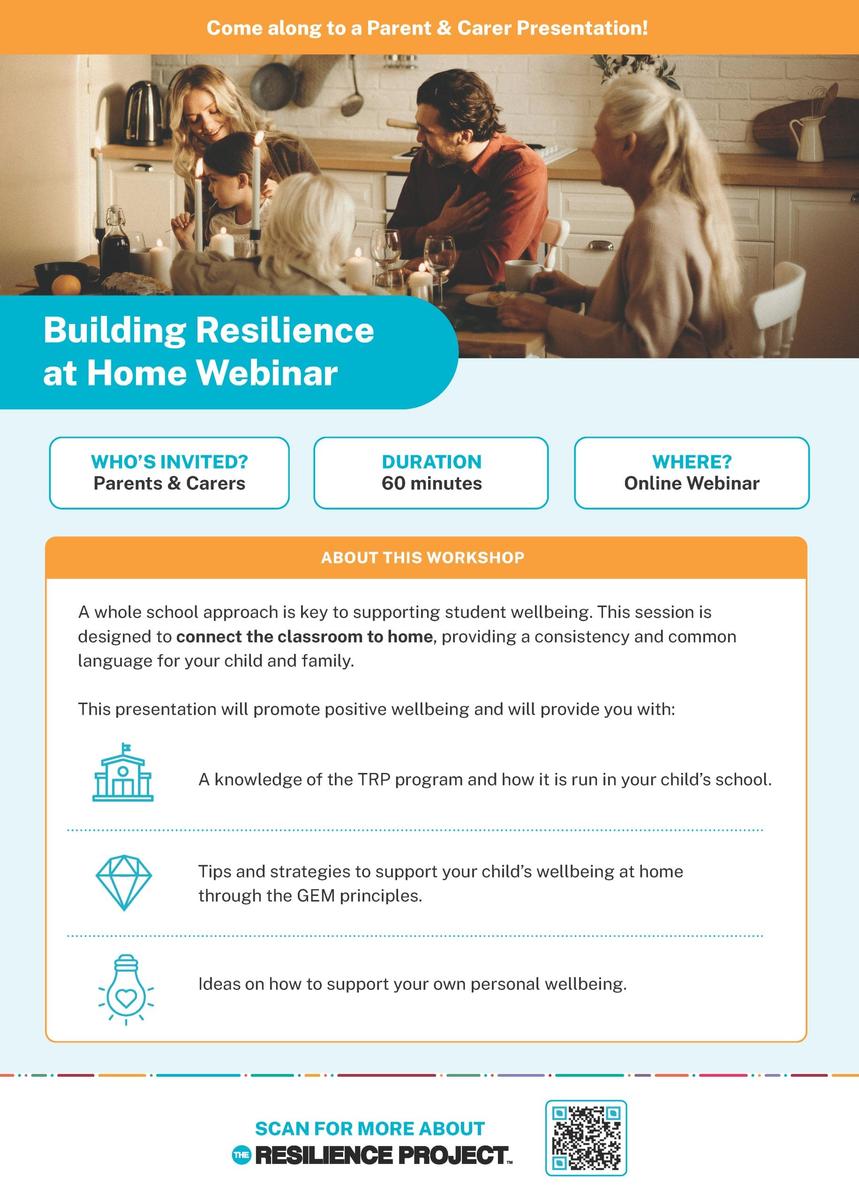Student Wellbeing

Embracing Creativity
Whether you or your children identify as creative individuals or not, everyone can enjoy and benefit from creative activities.
Art and craft: creative activities for school-age children
At this age, children have a solid understanding of colour, shapes, patterns and details. Where your child used to draw scribbles and squiggles for trees and flowers, now you can see leaves, branches, trunks and petals.
School-age children are also figuring out various ways to make things – they don’t need parts pre-made for them. For example, they might draw and cut out wings for a craft butterfly, or they might make wings from scrap paper and leaves. Younger school-age children might still need your help to get started.
Here are ideas for creative art and craft activities:
- Get your child to build and decorate a cubby house out of cardboard boxes or natural materials like tree branches.
- Play with textured paint. Encourage your child to add sand, dirt or sawdust to paint and use this to decorate boxes or make paintings.
- Find a large cardboard box and see what your child can come up with. It could become a robot costume, plane, puppet theatre and so on.
- Combine drawing, painting or clay-making with digital media. For example, make a clay model or a sculpture out of sticks and take photographs of it. Your child can use these photographs to make up a story.
- Go on a nature walk and take nature photographs. Create a story, photo album or map with the photos using an app or a software program.
- Let your child create digital artwork using software programs or apps. Using digital technology can spark your child’s imagination.
Why is Creativity Beneficial?
Creativity allows us to see the world from a different perspective, helping us to explore and express deeper emotions. Many people, including well-known artists, often find their creative energies flow most during challenging times. This is because creativity provides a unique way to express feelings that might otherwise be hard to articulate.
Benefits for Children
Children’s brains develop significantly from birth until their early twenties, with creativity playing a crucial role. Engaging in creative activities stimulates brain receptors, aiding in:
- Social Development: Enhancing interaction skills.
- Emotional Development: Helping process and express emotions.
- Cognitive Development: Improving thinking and problem-solving skills.
- Physical Development: Refining motor skills.
- Intellectual Development: Encouraging new ways of thinking.
Creative play not only supports overall health but also lays the foundation for managing emotional well-being and mental health long-term.
Benefits for Parents and Children
Creativity can help reduce feelings of anxiety and depression, relieve stress, and process emotions, including trauma. It also enhances positive emotions, improves immune function, and builds social skills. Creative activities can also unblock old, unhealthy thought patterns, relieving boredom and increasing motivation, self-awareness, and self-esteem.
How Creativity Affects the Brain
Engaging in creative activities calms the brain regions responsible for anxiety and activates those that process emotions, leading to greater peace and relaxation. It also improves overall brain function by enhancing connectivity between different brain regions, crucial for mental health.
Please make sure you enrol for this free online presentation.
Individually register for the webinar using this link. We will then send them the Zoom link and a calendar invite. Thursday, 13 Mar 2025 6:30PM
We know that parents and carers often prioritise the health and wellbeing of others before their own. It’s really important to practise regular self-care and our positive mental health strategies are applicable to people of all ages.
You can play a big role in supporting the development of positive wellbeing habits at home by checking out the Parents and Carers page on our website. Your school may even publish some GEM activities in the school newsletter or other community communication platforms.
Jenny Willmott
Deputy Principal
Student Wellbeing

